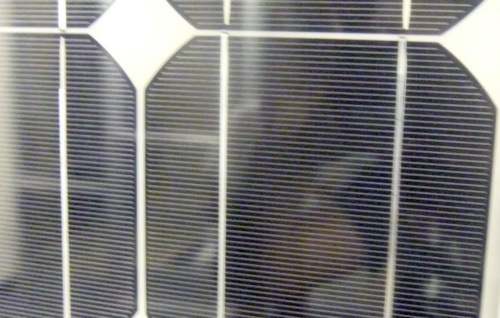Solar Cells
I was able to visit a friend from childhood last week and got to learn a bit about his discipline. I shall share with you some fascinating information of what goes into making low-cost yet highly efficient solar cells.

So the above is a picture of a solar cell. Made with highly purified silicon (which is not as cheap as dirt), it looks bluish because it’s absorbing yellow-orange wavelengths of light. This is by design because the most amount of energy lies in that spectrum. Ideally, you want black cells so that all light is absorbed. Such cells exist but those are super expensive.
Notice those strips? That’s silver. This weak metal is needed to conduct the electricity out of the cell. Here’s where it gets interesting. The silver is obscuring the solar cell. As thin as it may be, this means that the light absorption of the cell is not at its max and energy is being wasted. You want the silver to be thin enough to show as much surface area of the cell as possible yet thick enough to have the current flow out. A lot of research is done to build and apply fine silver solvents that spread properly on the silicon wafer at a nanoscopic scale.
Homeslice has attained ~30% cell efficiency but as high as it is, apparently it’s still not enough. He fights the good fight of cost/efficiency to build highly optimized solar cells which may mean clean and cheap energy for us in the near future. Bravo and godspeed!